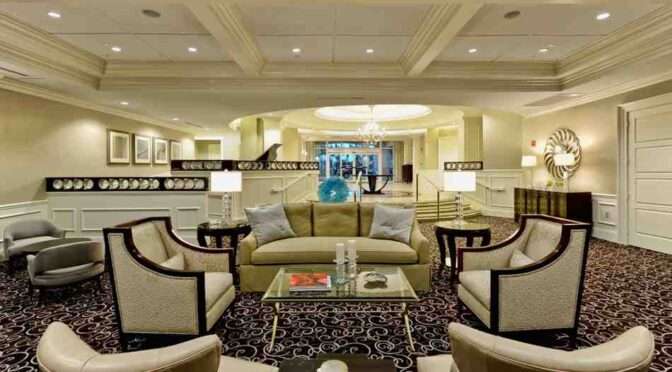Designing a hotel is more than just aesthetics — it’s about creating an experience that aligns with the brand, satisfies guest expectations, and maximises functionality. Whether it’s a boutique hotel, luxury resort, or budget-friendly accommodation, thoughtful planning and execution are critical to success. In this guide, we’ll explore the 7 major design considerations when designing a hotel, so you can lay the foundation for a memorable and high-performing hospitality space.
1 . Guest Experience and Flow
The design must anticipate and enhance the guest journey, from check-in to check-out. This includes intuitive signage, a welcoming reception area, and smooth navigation to lifts, rooms, and amenities. First impressions start in the lobby, and a thoughtful layout ensures ease and comfort throughout the stay.
➡️ Explore: Creating Welcoming Hotel Lobbies: Interior Design Tips & Trends
2 . Aesthetic Identity and Branding
Every hotel must have a clear design identity that reflects its brand positioning — whether luxury, modern, boutique, or eco-conscious. Colour schemes, textures, artwork, and even furniture choices should align with the hotel’s message to create a lasting impression.
➡️ Compare styles: Luxury vs. Budget-Friendly Hotel Design: 5 Key Differences
3 . Room Functionality and Comfort
Guest rooms must be multi-functional, comfortable, and well-equipped. Prioritise ergonomic furniture, soundproofing, lighting control, and quality bedding. Integrating tech (USB outlets, smart TVs, and automated lighting) is increasingly expected in modern accommodations.
4 . Lighting Design
Lighting plays a vital role in setting the tone and enhancing both mood and utility. Use layers — ambient, task, and accent lighting — to create depth and function in different zones like rooms, lobbies, corridors, and restaurants.
5 . Sustainability and Energy Efficiency
Sustainable design isn’t just a trend — it’s a must. Hotels are integrating eco-friendly solutions such as LED lighting, low-flow plumbing, green roofs, and locally sourced materials to reduce environmental impact and appeal to eco-conscious travellers.
6 . Safety, Accessibility & Regulations
Design must ensure safety compliance, accessibility for all guests, and adherence to fire codes, evacuation plans, and building standards. Accessibility features like ramps, lifts, braille signage, and barrier-free bathrooms are essential in today’s hospitality industry.
7 . Public and Social Spaces
From restaurants to lounges, spas to rooftop bars — shared areas should promote comfort, functionality, and interaction. These are revenue-generating spaces, so designing them with atmosphere, flow, and guest behaviour in mind is critical.
➡️ See examples: Hotel Interior Design Portfolio
Final Thoughts
Great hotel design balances functionality, emotion, and brand storytelling. At Oraanj Interiors, we work closely with hoteliers to deliver stunning, guest-focused designs that leave lasting impressions.
Looking to design or refurbish your hotel? Get in touch with our team for a personalised consultation today.


